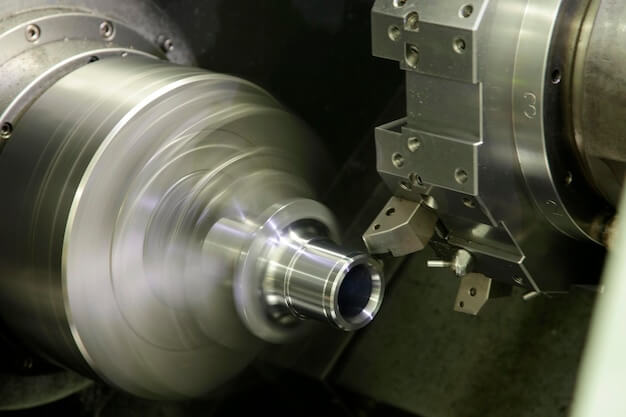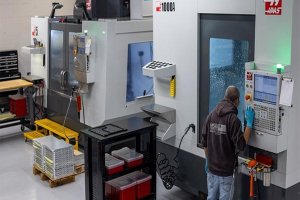Introduction to 3D Printing Technology
3D printing, a transformative approach to manufacturing and prototyping, enables the creation of complex structures from digital blueprints by successively layering material until a three-dimensional object is formed. This article endeavors to unravel the intricacies behind this innovative technology, elucidating its processes, advantages, and wide-ranging applications. By offering a clear exposition on how 3D printers operate—from the initial design phase through to the final printed product—we aim to simplify the concept for both novices and professionals alike, exploring its potential to reshape traditional manufacturing and influence diverse fields.
Understanding the 3D Printing Process
The initiation of 3D printing begins with digital modeling, where a three-dimensional design is crafted using computer-aided design (CAD) software. This virtual blueprint is then transformed into printable instructions through slicing software, which divides the model into thin horizontal layers and generates corresponding G-code that precisely guides the printer’s movements. The core of 3D printing lies in its various techniques, such as Fused Deposition Modeling (FDM), which extrudes thermoplastic filaments layer by layer; Stereolithography (SLA), employing UV light to cure liquid resin; and Selective Laser Sintering (SLS), that fuses powder materials with a laser. After the object materializes, post-processing steps like sanding, curing or painting are often required to achieve the desired finish and mechanical properties.
Benefits of 3D Printing
One profound advantage of 3D printing is the unparalleled potential for customization. This manufacturing technique allows designers to create intricate and bespoke designs that would be impossible or prohibitively expensive with traditional methods. Furthermore, 3D printing presents significant environmental benefits by minimizing waste; it adds material layer by layer to form an object, contrasting sharply with conventional subtractive processes which often generate a substantial amount of scrap. Additionally, 3D printing accelerates product development, as prototypes can be swiftly produced, tested, and iterated upon without the need for cumbersome tooling or set-up changes, thereby enhancing innovation speed and agility. Lastly, declining costs in 3D printing technology have democratized access to this advanced fabrication process, allowing small businesses and hobbyists to exploit the same cutting-edge capabilities once reserved for larger corporations.
Applications of 3D Printing Across Different Sectors
3D printing holds transformative potential across various industries, revolutionizing how objects are created and personalized. In healthcare, it enables the production of custom prosthetics and detailed organ models which surgeons use for practice before performing complex procedures, improving patient outcomes. The automotive industry leverages this technology to produce parts on-demand and expedite prototyping processes, cutting down development time and costs significantly. Within aerospace, 3D printing is prized for crafting lightweight yet strong components that contribute to fuel efficiency and reduced emissions. Meanwhile, in construction, this innovative method offers a new approach to fabricating building elements, potentially speeding up construction times and introducing novel design possibilities that traditional methods cannot accommodate.
Advances in Materials Used for 3D Printing
The realm of 3D printing is experiencing a material revolution, transforming what can be created from the digital world into tangible, functional objects. Innovations include the development of advanced polymers with enhanced durability, metals that are easier to shape and have higher strength-to-weight ratios, and biocompatible substances designed for medical implants that adapt seamlessly within the human body. Furthermore, researchers are creating eco-friendly filaments sourced from renewable resources or made from recycled waste, minimizing environmental impact. These advances not only expand the range of applications but also profoundly influence design freedom, functionality, and sustainability of 3D printed products.
Improvements in 3D Printer Speeds and Resolution
Recent technological strides have led to significant enhancements in the performance of 3D printers. Engineers are making headway in boosting print speeds without compromising on resolution, ensuring rapid yet precise creation of components. Higher printer resolutions now allow for finer details, while improved hardware and software integration has resulted in smoother surfaces and more complex geometries being possible with less post-processing. This amplifies productivity and opens doors to new industrial applications where tailored rapid prototyping and manufacturing were not feasible before through 3D printing technology.
Potential Impacts of 3D Printing on Supply Chains and Logistics
Adoption of 3D printing presents profound implications for supply chains and logistics sectors. The ability to produce items on-demand close to end-users reduces dependency on long-distance transportation, leading to both cost savings and faster delivery times. For industries managing expansive inventory, localized 3D printing facilities can lessen stock volumes by enabling just-in-time production of parts as needed. This shift promises greater responsiveness to market changes and customer needs, contributing to leaner, more efficient supply chain models fundamentally altering how goods are stored, shipped, and managed globally.
Ethical Considerations and Intellectual Property Challenges
With the expansion of 3D printing capabilities comes a suite of ethical quandaries and intellectual property (IP) challenges. The potential to replicate products without authorization raises concerns over copyright infringement, compelling stakeholders to navigate a complex IP landscape. Moreover, the proliferation of 3D printable weapons poses societal risks that necessitate stringent regulation. As the industry matures, establishing robust legal frameworks and forward-thinking ethical guidelines will be critical in harnessing the benefits of 3D printing while mitigating its potential misuse.
Other Articles You Might Enjoy
- 3D Printing Resins: Standard vs. Engineering-Grade Options
Introduction to 3D Printing Resins In the vast field of additive manufacturing, 3D printing resins hold a significant place due to their unique properties and wide-ranging applications. These thermosetting materials…
- TPE vs. TPU in 3D Printing: Flexibility, Durability, and Use Cases
Introduction to 3D Printing Using TPE and TPU Materials 3D printing, a revolutionary technology that has transformed multiple industries such as manufacturing, healthcare, and aerospace, is dependent on the choice…
- 3D Printing Solutions: Bridging the Gap Between Design and Manufacturing
Introduction to 3D Printing Solutions 3D printing solutions represent a transformative advancement in the field of manufacturing. Assuredly, this cutting-edge technology completely redefines traditional methodologies by facilitating seamless transition from…






